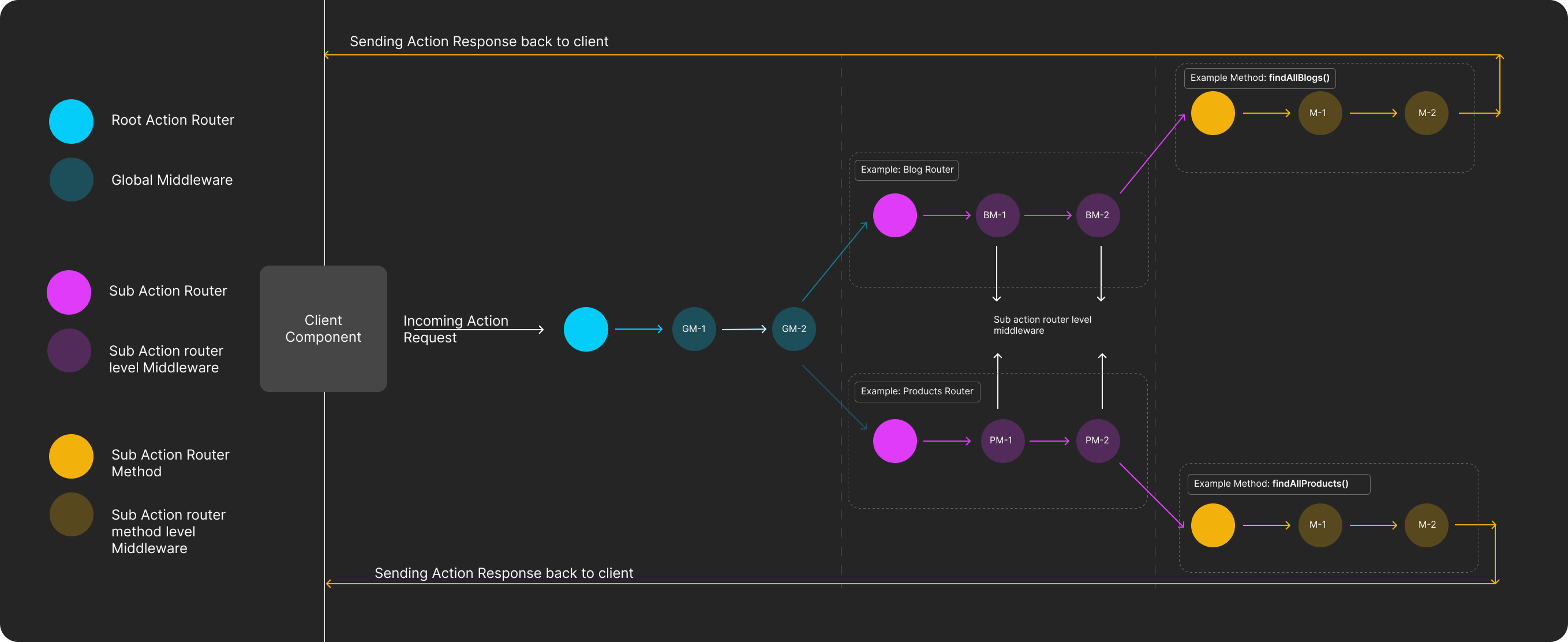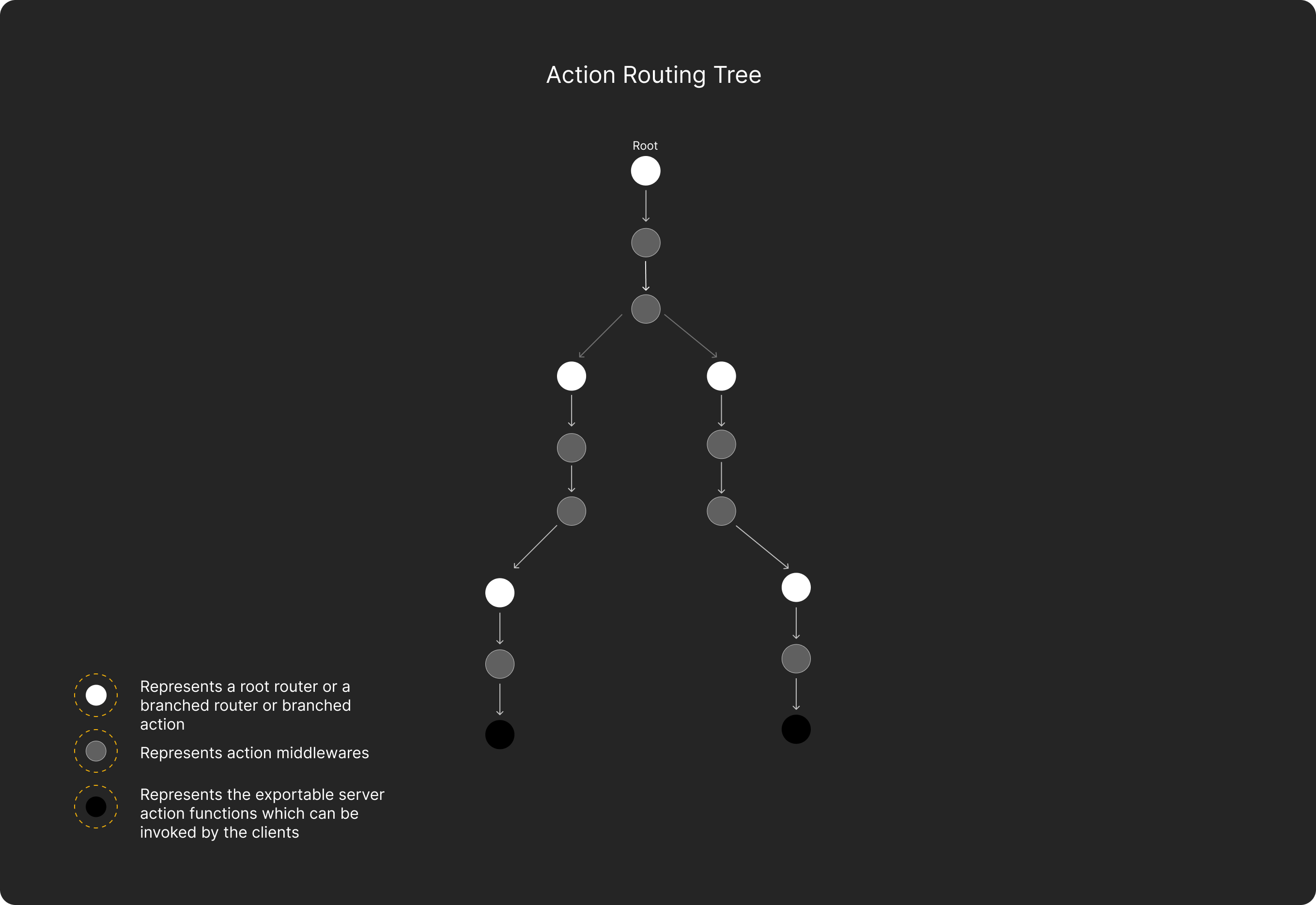📝 NOTE: If you're already familiar with the routing and middleware patterns, feel free to skip this page and start from here
If you're looking for compatibility and installation guide then head over to here
Go through the concepts page by page in order and top to bottom on each page to get good understanding of the concepts. Skip only when you already know the concept. This won't take you long. If you've already user nextjs server actions and have some understanding of express like routing and middleware pattern then this shouldn't take you more than 10-15 mins.
File Conventions
All the code examples in this documentation use nextjs v14 app router
without src directory. You're absolutely free to use src directory or
even organize your files as you see fit.
For reference: Example Project structure
my-nextjs-app/
├── .next/
├── ...
├── app/
│ ├── actions/ <- exportable server actions will go here
│ ├── ...
│ ├── page.tsx
├── components/
├── lib/ <- We'll keep action router here
├── ...
├── tsconfig.json
└── README.mdHow action routing works?
The basic idea behind action routing is simple. The action router lets you define a request-response lifecycle for any action request. You can choose to create a single action router per project or create multiple incrementally as needed.

A picture is worth a thousand words
